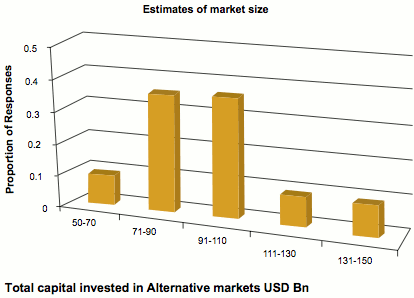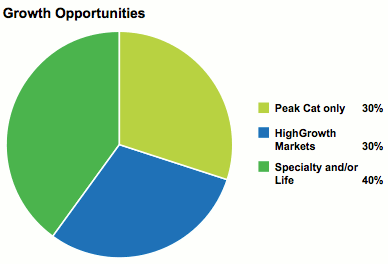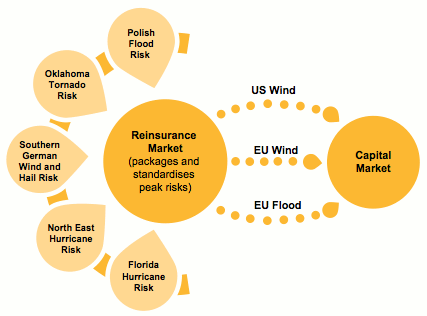Across the peak catastrophe zones, insurance-linked securities (ILS) funds and their managers have had a real impact on pricing and this looks set to continue as ILS capitalises on its lower cost of capital, a survey undertaken by Willis Re found.
Willis Re publishes some results of a survey on alternative capital and the alternative reinsurance landscape, in preparation for the Monte Carlo Rendez-vous, by asking twenty leading ILS funds and investors some pressing questions on the sectors future development and the challenges they face.
The survey found that the ILS sector is undergoing a steady evolution and that convergence of the capital markets and traditional reinsurance continues to play out. However the respondents lacked consensus on many topics and Willis Re said there is a sense that, just like their traditional reinsurance competitors, ILS players are evolving a different set of responses to the challenge of growing their share of a soft reinsurance market.
The ILS funds and investors all agreed that they face the “challenging reality” of deploying their capital in the soft market environment. But not all the ILS funds have the same tools available or solutions in mind to meet the challenge, meaning that there is a divergence of strategies.
The response to the soft market therefore differs depending on how established a fund is, with the more established players turning down capital from investors, returning cash or both. Other funds are trying to expand, growing into new areas of the market in order to ensure their capital is deployed.
Reinsurance buyers have an upper hand, Willis Re says, with fronted reinsurance products often the choice as it is a product they are familiar with. However, ILS funds see fronting as expensive and would prefer to transact in the way they are familiar. Asked what split of products they’d like to offer, almost all ILS funds said they’d like to reduce the amount of fronting they do. Willis Re notes that in the international space the majority of alternative capital transactions are fronted, however, showing that ILS managers are not getting their way.

Fig 1: Alternative market participants deploy their capital across three main types of business Collateralised reinsurance, Cat bonds and Fronted reinsurance. The survey reveals their ideal split of business averaged across the respondents, not their actual split. - Source: Willis Re
The lack of consensus showed when Willis Re asked ILS managers and investors how big they believed the alternative capital market could get in five years. Answers ranged from around the same size as today to a tripling of alternative capital in the reinsurance market.

Fig 2: Shows the range of estimates of the amount of capital invested in alternative markets in five years - Source: Willis Re
Again there is a divergence of strategies when it comes to growth and expansion among the ILS space and alternative capital, with some clearly remaining firmly focused on peak risks, while others look to underwrite a broader range of lines of reinsurance business.
Willis Re notes that the strategy of writing a broad range of lines is harder to understand from a pure cost of capital perspective, however either ILS managers believe there are adequate returns to be made (above costs) or they are boosting their returns on capital deployed using some kind of leverage (perhaps through the use of fronting reinsurers).

Fig 3: Surveyed on possible growth opportunities 30% of funds didn’t believe there was any worthwhile business outside the peak Cat zones, however a significant proportion saw potential in high growth markets like China, or other lines of business - Source: Willis Re
On the topic of what opportunities or initiatives might help the ILS market to expand, answers such as more availability of leverage options, the development of indices for non-catastrophe lines, solving the reinstatement issue and the launch of standardised, exchange traded catastrophe products all featured as idea.
Willis Re points out that there does appear to be a divergence of strategies, with some hoping for standardisation of risk trading and indices, while others look for more ability to closely resemble traditional reinsurance. Perhaps this suggests a split between the ILS managers that will remain peak catastrophe focused and look to be able to break these risks down into liquid, tradable chunks, versus those ILS managers who will become more diversified reinsurers using third-party sourced capital?
Willis Re provides a good diagram showing how the traditional reinsurance market could source and package catastrophe risks, to produce the standardised risk categories that many ILS managers would prefer to deploy capital into. This is actually a very good prediction for one direction that the reinsurance market could head in, as a response the current structural change being seen.

How the reinsurance market could package peak catastrophe risks for ILS investors - Source: Willis Re
However, Willis Re notes, the motivation needs to be there for traditional reinsurers to buy into this model. We would also add that either a motivation or perhaps if they feel becoming a channel for risks, from insurance to the capital markets, is their only chance to survive and avoid being disintermediated by ILS.
Other issues with this model that Willis Re notes, is that it assumes that catastrophe bond spreads and costs remain competitive and that reinsurers are willing to assume and hold onto some of the basis risk. Also, this model could mean a smaller role for ILS managers, as the expertise required at the capital markets end may not be as significant and this could open the market up to many more types of direct and fixed income investors.
An alternative vision, less of a “step change”, would be for a continuing steady evolution and growth of the ILS sector, with an increasing amount of capital markets money coming into the reinsurance market. This doesn’t require such a shift in terms of product design, market dynamic or thinking among cedents.
In fact Willis Re says that as many ILS fund managers want to reduce fronting use, improve the efficiency of their products for cedents and move outside of peak catastrophe risks, perhaps they should just set up a rated reinsurer instead. Some of the largest funds are already heading in this direction, Willis Re says, and a hybrid model may give them the best of both worlds with balance sheet leverage and a proven reinsurance product.
Ultimately Willis Re maintains its logic that the underwriters with the most efficient cost of capital will be most competitive in the catastrophe exposed regions of the world. With that in mind, Willis Re says that both strategies that ILS managers said they prefer are valid:
- The standardised index based approach has a definite intellectual appeal; it offers a deep pool of low-cost capital to be utilised by reinsurance companies to write tailor-made products for their clients, a situation where everyone wins.
- It is still true that a rated reinsurer provides the cheapest form of capital for diversifying risks, as it can use its balance sheet to efficiently leverage the thin margins on individual deals. The creation of hybrid reinsurers, with a capital structure that combined traditional equity and an ILS fund, to achieve a rated entity, could provide an efficient solution that would appeal to all parties.
In fact, Willis Re says that these two strategies or visions are not mutually exclusive, both could exist side by side and one may bring about the other.
Willis Re concludes:
What is not clear is who will lead the charge in these changes: will traditional reinsurers step up and take the lead or will the newcomers evolve into traditional reinsurers?
In the peak catastrophe zones Willis Re expects ILS to continue to capitalise on its lower cost of capital, with catastrophe bonds and collateralized reinsurance remaining products of choice due to their attractive pricing, despite transactional overheads.
At the same time many other lines appear out of reach, as buyers prefer the traditional model and in these lines ILS funds cannot compete on price (at the moment).
The survey responses suggest that the quest for diversification will continue among ILS managers, with many already taking steps to enter new markets.
Under these circumstances it is difficult to see how they can effectively compete without a reinsurance balance sheet to leverage the systematically lower absolute returns individual diversifying deals offer.
After all, Willis Re explains, ILS capital even though lower cost still isn’t free and it must remain competitive with what alternatives are available.
Also read our recent article: Structural change, lower margins, a deeper reinsurance convergence.
 View all of our Artemis Live video interviews and subscribe to our podcast.
View all of our Artemis Live video interviews and subscribe to our podcast.
All of our Artemis Live insurance-linked securities (ILS), catastrophe bonds and reinsurance video content and video interviews can be accessed online.
Our Artemis Live podcast can be subscribed to using the typical podcast services providers, including Apple, Google, Spotify and more.































